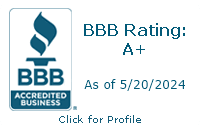Props and the basics
Which prop do i need for my boat?

The trick is to find a prop that delivers acceptable acceleration and top speed.
A qualified dealer or marina can help with selection, but you need to be prepared with some vital information.
You will need to know:
- Type of engine and its horsepower rating
All manufacturers have the their name on the motor somewhere, However your horsepower rating might not be as readily visible. Also some Outboards are not always accurate the label may say 150, but it could be more or less depending on the output of the motor. This also brings to mind the point that your boat motor should be in good running and working order in order for you correctly replace your prop. You need to have what they call a baseline reading to compare to any changes you make later on. If you motor is not running up to it's full potential, it will not give you an accurate baseline to base your decision on where to go next as far as a new prop.
- The boat's weight and hull style
While this information is important , it is not always required. You should be aware however, that different hull styles act differently under different conditions, as well as how much weight the boat is dealing with.
- The type of propeller you are running now ie. number of blades, diameter and pitch.
If you don't know, diameter and pitch are usually stamped somewhere on the prop. Fixed-blade props either deliver low-end torque or faster top speeds, you can't have both. If you load your boat with tons of diving or fishing gear, you might need a low pitch. If you need more speed, a higher pitch is the way to go.
Example: 15.25 x 15p (15.25 is your hub diameter, 15p is the pitch of the prop)
Example: 48-78124-23P (this is a mercury number that does not specify anything but the pitch 23P) In this case you would need to use the Manufacturers part number to determine the hub size
You will also need to verify if it is a Left or Right handed prop. As a rule of thumb most props are a right or clockwise turning props. The exceptions are for boats with Dual motors the left engine will have a Left or counterclockwise turning prop.
- Know the engine's rpm at wide-open throttle when your boat is running with a typical load and trimmed for best speed.
Test your engine at Wide Open Throttle (WOT). Record the result with a tachometer at WOT. The maximum horsepower rating (the engine HP number) of a marine engine happens in a narrow RPM band, typically 5,000-5,500 for two strokes and 5,000-6,000 for 4 strokes. If you are running either above or below your RPM band, you should consider a different propeller.
Adding 1" of propeller pitch will reduce full-throttle (WOT) RPM by 150 to 200.
Subtracting 1" of propeller pitch will increase full-throttle RPM by 150 to 200.
Moving from a 3-blade to a 4-blade propeller, a 4-blade generally turns 50 to 100 RPM less than a 3-blade propeller with the same pitch.
Switching from an uncupped to a cupped propeller will also reduce your RPM by 200.
Example: if you were to go out and run a Mercury 150 EFI:
WOT Operating Range = 5000-5600 RPM
Top End of Operating Range (highest horsepower) = 5600 RPM
Tachometer Reading when testing = 4800 RPM
Difference = 800 RPM
Knowing this, take the difference in the above example at 800 and divide it by 200. The result is 4. The prop to use will be 4 pitch less than the prop that was used during the test. Ultimately you may need to accept a compromise or be prepared to swap propellers. Interchangeable* hub systems such as the Turning Point Hub System, Flo-Torq and Solas Rubex are an option for quick swapping.
*Some manufacturers however have what are called pressed in hubs and cannot be changed for other makes. They are make specific hubs and can only be used for the motor and make specified by the manufacturer.

